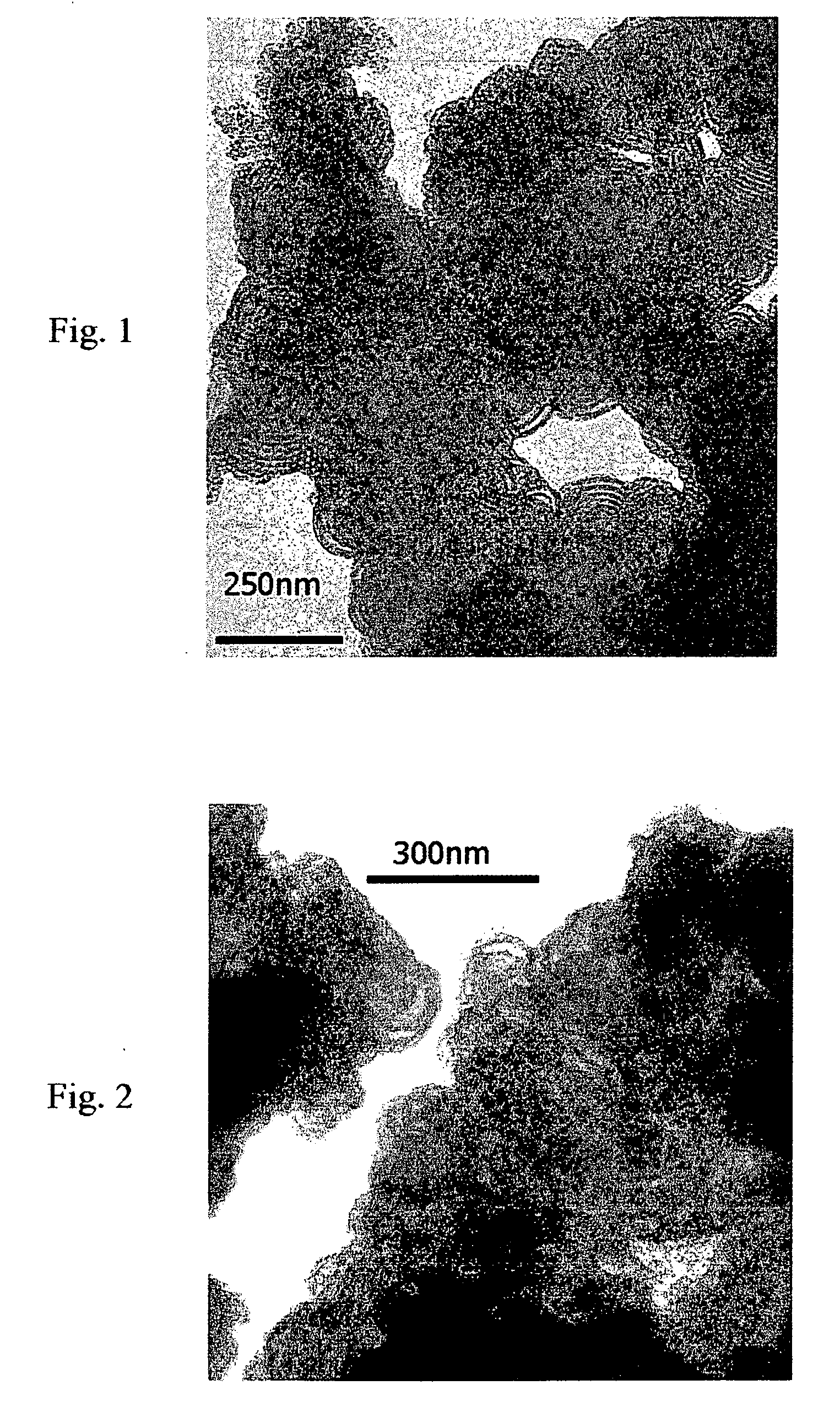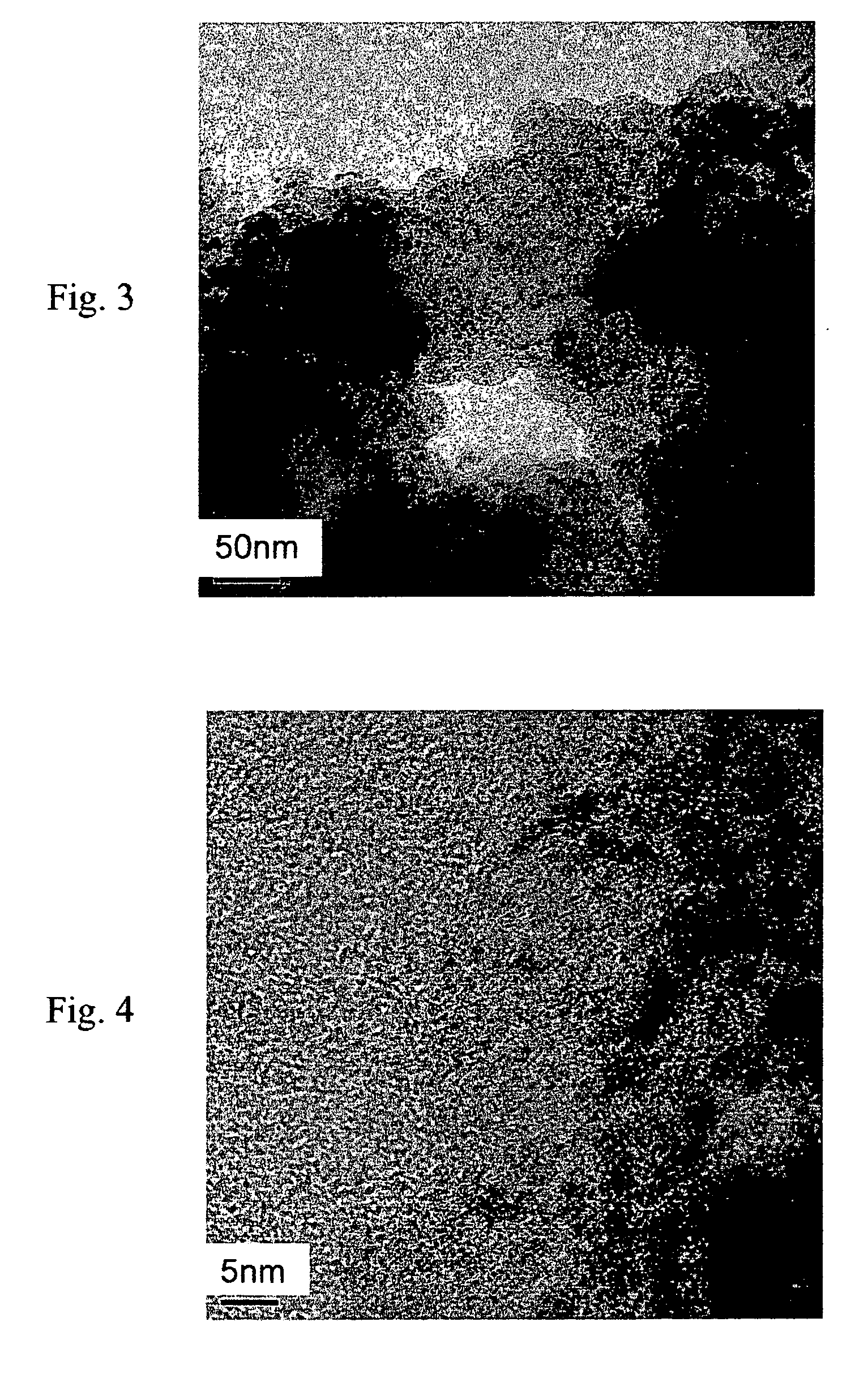Hollow mesoporous carbon electrode-catalyst for direct methanol fuel cell and preparation thereof
a technology of methanol fuel cell and hollow carbon electrode, which is applied in the direction of cell components, physical/chemical process catalysts, ceramicware, etc., can solve the problems of wasteful activation center of catalyst metal in the pores, discharge of carbon dioxide formed, and excessive pore distribution of carbon materials. , to achieve the effect of increasing the pore size of carbon carriers and discharging carbon dioxid
- Summary
- Abstract
- Description
- Claims
- Application Information
AI Technical Summary
Benefits of technology
Problems solved by technology
Method used
Image
Examples
example 1
[0042] A hollow mesoporous carbon material was prepared by the following steps: (a) synthesizing a micro emulsion; (b) synthesizing a wormhole-like molecular sieve template; (c) introducing a carbon precursor into said molecular sieve template; (d) carbonizing said carbon precursor / molecular sieve template at a high temperature; (e) removing the molecular sieve template to obtain a hollow mesoporous carbon material; and (f) synthesizing a Pt—Ru / hollow mesoporous carbon catalyst.
[0043] (a) 1.4 g of a non-ionic polymer surfactant P 123 (EO20PO70EO20, wherein EO and PO separately represent ethylene oxide and propylene oxide) was dissolved in 50.0 g of water. The resulting solution was mixed homogenously at room temperature, then added with 1-8 g of toluene, and then stirred in a thermostat (30° C. or 40° C.) overnight to form a micro emulsion.
[0044] (b) 5.5 g of sodium silicate was dissolved in 300.0 g of water at 40° C. The solution was agitated in a thermostat for about 3 minutes. ...
PUM
| Property | Measurement | Unit |
|---|---|---|
| Temperature | aaaaa | aaaaa |
| Temperature | aaaaa | aaaaa |
| Specific surface area | aaaaa | aaaaa |
Abstract
Description
Claims
Application Information
 Login to View More
Login to View More - R&D
- Intellectual Property
- Life Sciences
- Materials
- Tech Scout
- Unparalleled Data Quality
- Higher Quality Content
- 60% Fewer Hallucinations
Browse by: Latest US Patents, China's latest patents, Technical Efficacy Thesaurus, Application Domain, Technology Topic, Popular Technical Reports.
© 2025 PatSnap. All rights reserved.Legal|Privacy policy|Modern Slavery Act Transparency Statement|Sitemap|About US| Contact US: help@patsnap.com


